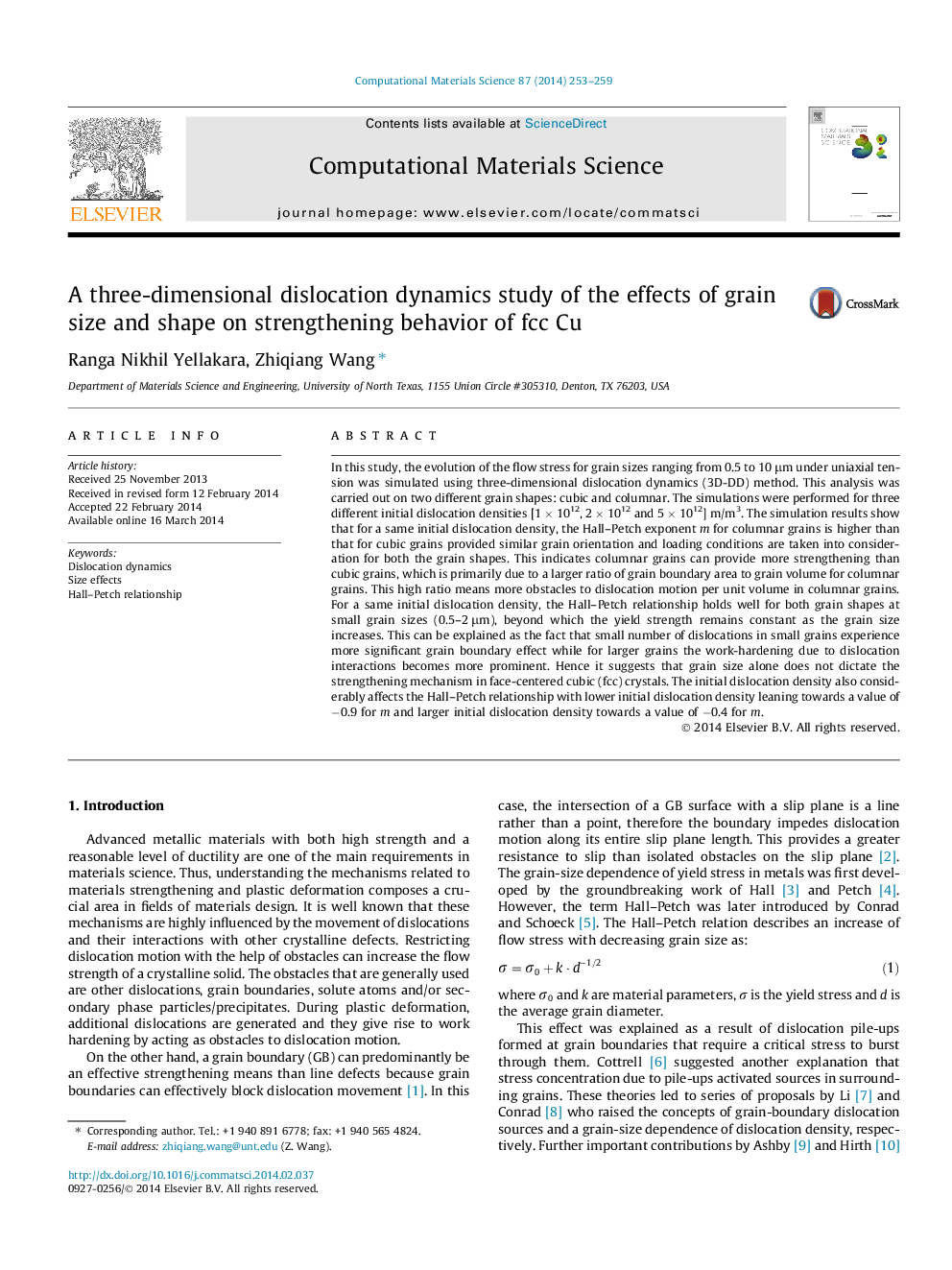| Article ID | Journal | Published Year | Pages | File Type |
|---|---|---|---|---|
| 1560566 | Computational Materials Science | 2014 | 7 Pages |
Abstract
In this study, the evolution of the flow stress for grain sizes ranging from 0.5 to 10 μm under uniaxial tension was simulated using three-dimensional dislocation dynamics (3D-DD) method. This analysis was carried out on two different grain shapes: cubic and columnar. The simulations were performed for three different initial dislocation densities [1 Ã 1012, 2 Ã 1012 and 5 Ã 1012] m/m3. The simulation results show that for a same initial dislocation density, the Hall-Petch exponent m for columnar grains is higher than that for cubic grains provided similar grain orientation and loading conditions are taken into consideration for both the grain shapes. This indicates columnar grains can provide more strengthening than cubic grains, which is primarily due to a larger ratio of grain boundary area to grain volume for columnar grains. This high ratio means more obstacles to dislocation motion per unit volume in columnar grains. For a same initial dislocation density, the Hall-Petch relationship holds well for both grain shapes at small grain sizes (0.5-2 μm), beyond which the yield strength remains constant as the grain size increases. This can be explained as the fact that small number of dislocations in small grains experience more significant grain boundary effect while for larger grains the work-hardening due to dislocation interactions becomes more prominent. Hence it suggests that grain size alone does not dictate the strengthening mechanism in face-centered cubic (fcc) crystals. The initial dislocation density also considerably affects the Hall-Petch relationship with lower initial dislocation density leaning towards a value of â0.9 for m and larger initial dislocation density towards a value of â0.4 for m.
Related Topics
Physical Sciences and Engineering
Engineering
Computational Mechanics
Authors
Ranga Nikhil Yellakara, Zhiqiang Wang,
